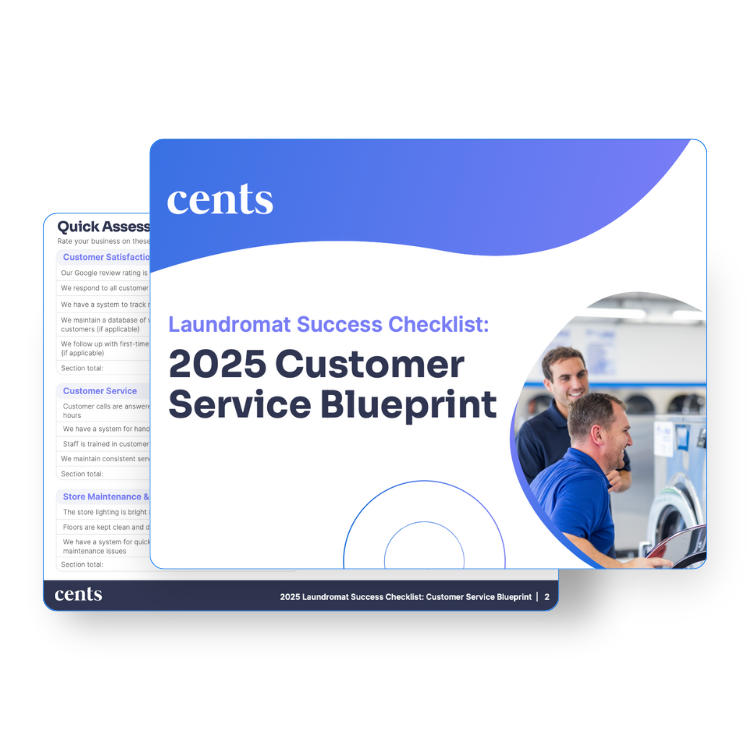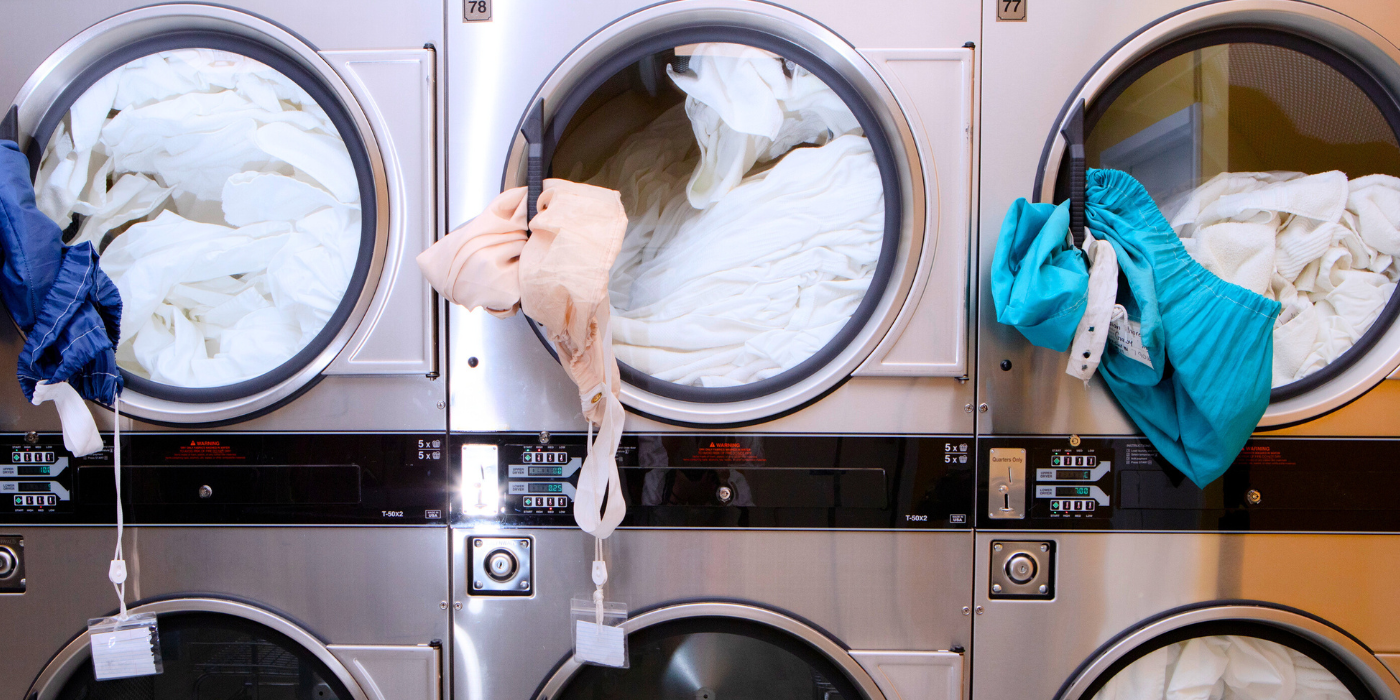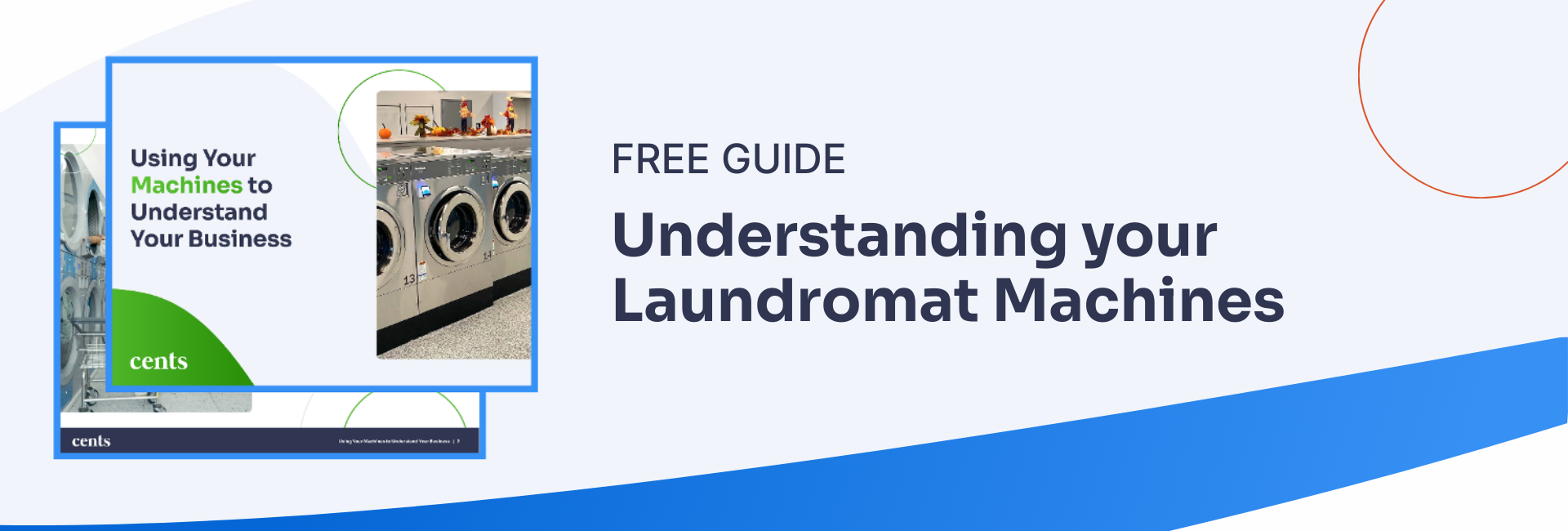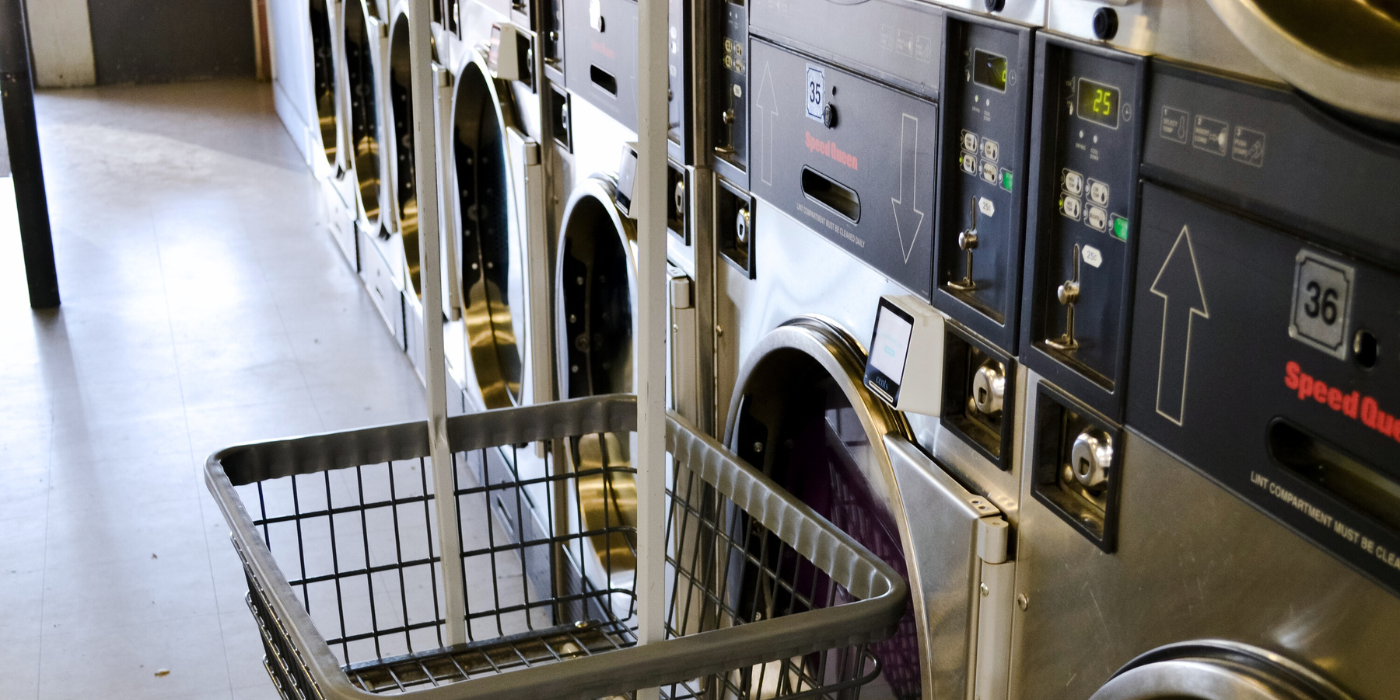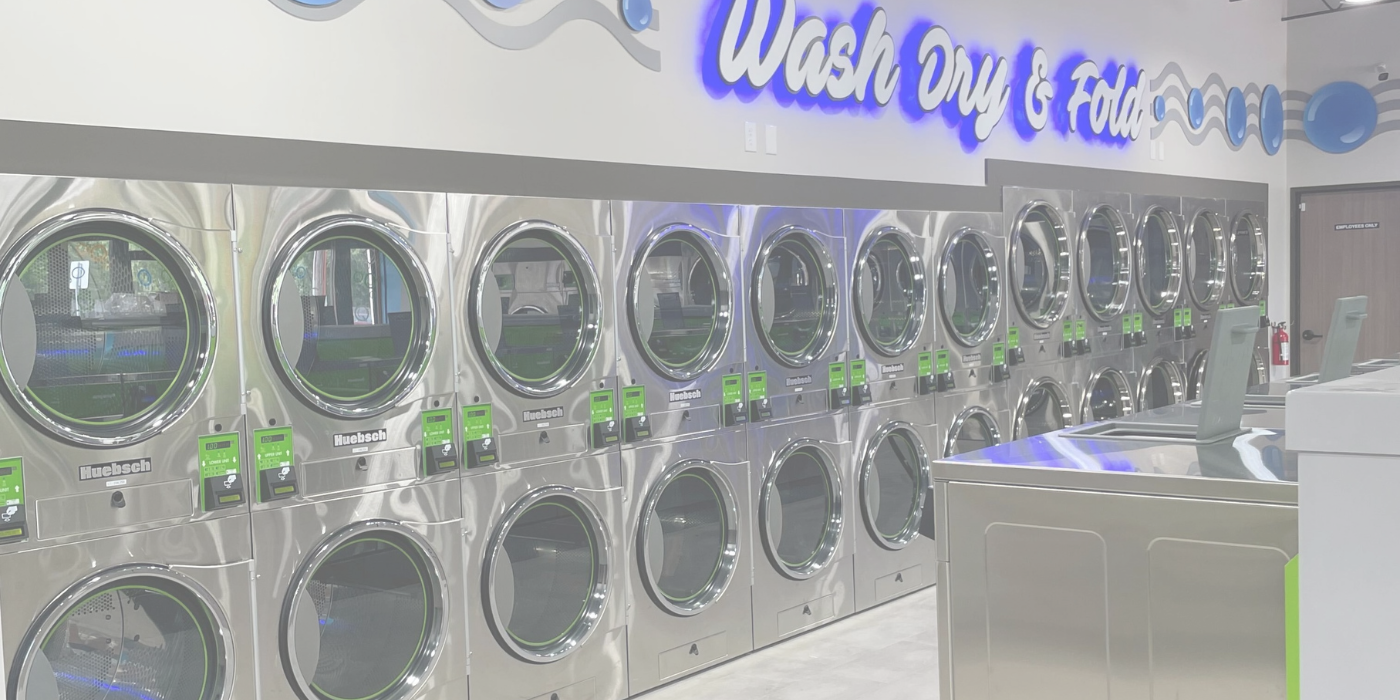Types of commercial laundry equipment
Understanding the types of commercial laundry equipment available will help you understand what laundry machine maintenance to expect. Each machine type has unique care needs, so let's dive in:
Commercial washing machines
-
Top-loading washers
-
Features: Easy to use, cost-effective, require more space, and familiar to most customers.
-
Size + lifespan (estimated): 12 lbs to 14 lbs, 5-8 years
-
-
Front-loading washers
-
-
Features: More energy-efficient, higher spin speeds, greater capacity, typically better for high volume stores.
-
Size + lifespan (estimated): 18 lbs to 50 lbs, 10-15 years
-
Commercial dryers
-
Vended dryers
-
Single load dryers: These are standard dryers found in most laundromats. They are designed for one wash load at a time.
-
Size + lifespan: 12 lbs to 18 lbs, 11-13 years
-
-
Stack dryers: These are two dryers stacked on top of each other, making it space-efficient. They usually have independent controls.
-
Size + lifespan: 30 lbs to 60 lbs, 10-15 years
-
-
-
On-premises dryers
-
Tumble dryers: Either gas-powered or electric-powered traditional dryers.
-
Stack dryers: Designed to save space, these feature two drying drums stacked on top of each other.
-
Rotary dryers: These have a large drum that rotates, typically used for industrial-scale laundry services.
-
How to maintain commercial washers
Maintaining your commercial washing machines is crucial to the longevity and performance of the equipment. Always consult your local technician to ensure your laundry machine maintenance plan meets industry standards. Here’s the key washer maintenance tasks:
-
Cleaning the drum
-
Checking the hoses
-
Inspecting the drain pump and filter
-
Checking the water inlet valves
-
Calibration and software updates
-
Checking the motor and electrical components
Cleaning the drum
Daily: Wipe down the drum with a damp cloth to remove any residue.
Weekly: Run an empty cycle with a washer cleaner to sanitize the drum.
Monthly: Inspect for any lingering debris and remove it.
Tips:
-
Use a non-abrasive cleaner to avoid damaging the drum.
-
If you notice any limescale build-up, consider using a specialized cleaner.
Checking the hoses
Daily: Wipe down the drum with a damp cloth to remove any residue.
Weekly: Run an empty cycle with a washer cleaner to sanitize the drum.
Monthly: Inspect for any lingering debris and remove it.
Tips:
-
Always have spare hoses on hand in case of emergency replacements.
-
Install water leak detectors to catch issues early.
Inspecting the drain pump and filter
Weekly: Quickly inspect the pump area for any foreign objects that could be obstructing it.
Monthly: Clean the drain filter to ensure that it isn't clogged with lint or small items like coins.
Tips:
-
A clogged filter can lead to drainage issues and even damage the pump.
-
Some models have a filter alert. Keep an eye on this and act accordingly.
Checking the water inlet valves
Monthly: Inspect the water inlet valves for leaks, rust, or any signs of wear.
Quarterly: Check the mesh screens inside the valves for buildup and clean them.
Tips:
-
A faulty water inlet valve can lead to water supply issues and even flooding.
-
Replace the valve if you notice any rust or leaks.
Calibration and software updates
Monthly: Ensure the machine is level to avoid wear on the components.
Quarterly: Check for software updates and apply them.
Tips:
-
Use a carpenter's level to accurately gauge whether the machine is level.
-
Keep a maintenance log to track when you last updated the software.
Checking the motor and electrical components
Quarterly: Have a qualified technician inspect the motor and electrical systems for any signs of wear or damage.
Tips:
-
Electrical issues should only be addressed by a qualified technician to prevent electrical shock or fire risks.
-
Keep a log of all electrical inspections to track the performance over time.
How to maintain commercial dryers
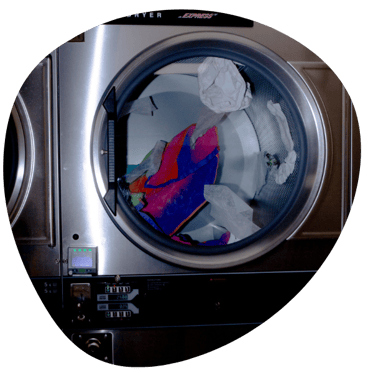
Ensuring that your commercial dryers are in tip-top shape can save you money and hassle in the long run. Keep in mind, dryers are more expensive to operate due to the cost of utilities, and inevitably will need a higher cost to maintain. Again, always consult your local technician. Here’s your commercial dryer maintenance checklist:
-
Cleaning the lint filter
-
Inspecting the exhaust
-
Motor and belt checks
-
Checking the heating element
-
Door seals and latches
-
Thermostat and sensors
Cleaning the lint filter
Daily: Remove and clean the lint filter.
Weekly: Inspect the lint trap housing for additional lint and remove it.
Tips:
-
A clogged lint filter can lead to overheating; make it a non-negotiable daily task.
-
Consider using a vacuum for a thorough cleaning of the lint trap housing.
Inspecting the exhaust
Weekly: Check for blockages and remove any build-up.
Monthly: Conduct a more in-depth inspection for wear and tear.
Tips:
-
Signs of a blocked exhaust include longer drying times and a hot dryer cabinet.
-
Replace any worn or damaged exhaust parts immediately to avoid fire hazards.
Motor and belt checks
Monthly: Inspect belts for wear and replace as needed.
Quarterly: Have a qualified technician inspect the motor.
Tips:
-
A squeaking noise often indicates a worn belt.
-
Keep spare belts and contact information for a trusted technician handy.
Checking the heating element
Quarterly: Inspect the heating element for any signs of damage or wear. A malfunctioning heating element can cause inefficient drying or even become a fire hazard.
Tip:
-
Ensure the heating element remains free of debris or lint build-up to prevent overheating.
Door seals and latches
Monthly: Examine the door seals for wear or damage. Worn seals can lead to heat loss, making the dryer less efficient.
Quarterly: Check the door latches for proper alignment and ensure they are securely closing.
Tip:
-
Regularly lubricate latches and hinges to keep them operating smoothly.
Thermostat and sensors
Quarterly: Ensure thermostats and moisture sensors are functioning correctly. Malfunctioning sensors can lead to clothes either over-drying or remaining damp.
Tip:
-
Calibrate sensors periodically to maintain accurate drying cycles and protect fabrics from damage.
Maintaining a clean exterior and laundromat environment
An often overlooked but crucial aspect of laundromat maintenance is the cleanliness of your facility and the exterior of your machines. After all, who doesn’t love cleaning their clothes in a clean space? A well-maintained laundromat ensures that your commercial washing machines operate at peak efficiency and provides a welcoming space for customers. Let's break this down into actionable steps:
Cleaning the exterior of machines
Daily: Wipe down surfaces
-
Use a non-abrasive cleaner and a soft cloth to wipe down the exterior surfaces of your washers and dryers. This will remove any detergent spills, lint, or grime that can accumulate.
Tips:
-
Opt for cleaners that are specifically designed for appliance exteriors.
-
Stay clear of electrical components to avoid electrical hazards.
Weekly: Deep clean control panels
-
Use a mild cleaner and a soft brush to clean around buttons, dials, and digital screens where grime tends to accumulate.
Tips:
-
Avoid using excessive liquid to prevent electrical short circuits.
-
Make use of compressed air to dislodge any trapped dust or debris.
Monthly: Inspect and Clean Coin Slots
-
Use a vacuum or canned air to remove debris from the coin slots. Manually remove any stuck coins or foreign objects.
Tips:
-
Schedule these cleanings during off-hours to minimize disruptions to your service.
-
Always double-check the coin vaults and remove money as part of this routine to prevent overflows.
Keeping the laundromat environment clean
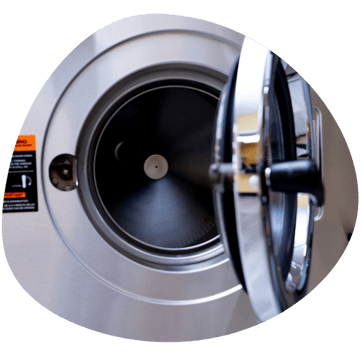
Daily: Floor cleaning and maintenance
-
Sweep the floors and mop with a suitable cleaning solution to prevent slips and falls. A quick touch up can brighten your laundromat feel.
Tip:
-
Consider anti-slip mats near the entrance, especially during rainy or snowy seasons.
Weekly: Sanitize common areas
-
Wipe down folding tables, chairs, door handles, and other frequently-touched surfaces. Clear entrance and parking lot of debris.
Tips:
-
Use a disinfecting solution that is proven to kill bacteria and viruses, ensuring a safer environment for your customers.
-
Be sure to keep your outside parking and entrance clean. This leads to a more inviting laundromat for new visitors.
Monthly: Ventilation and lighting checks
-
Inspect and clean ventilation ducts, and ensure all light fixtures are clean and functioning well.
Tip:
-
A well-ventilated and brightly lit laundromat improves customer experience and can even help deter vandalism or theft.
By integrating these tasks into your maintenance schedule, you'll not only extend the life of your laundry machines but also create a welcoming, clean environment that will help retain customers and keep them coming back.
Choosing the right maintenance service
When it comes to ensuring the longevity and optimal performance of your laundry equipment, the maintenance approach you choose is paramount. Here's a closer look at the options and the key factors to weigh in on:
DIY vs. Professional maintenance
Do It Yourself (DIY)
Pros: Cost-effective, immediate attention to minor issues, and hands-on knowledge of your equipment.
Cons: Time-consuming, potential for errors due to lack of expertise, and risk of voiding warranties or causing more extensive damage.
Professional maintenance technicians
Pros: Expert attention, warranty preservation, access to specialized tools, and periodic inspections that can preemptively identify issues.
Cons: Costlier than DIY, potential for scheduling conflicts, and dependency on the service provider's expertise and reliability.
Factors to consider when hiring a maintenance service
-
Experience and expertise: Ensure the service provider has a proven track record with commercial laundry machines.
-
Availability: A service that can accommodate emergency call-outs or provides regular check-ups aligns with the unpredictable nature of machine breakdowns.
-
Cost: Compare quotes from different providers but remember, the cheapest option isn't always the best in terms of quality.
-
Warranty preservation: Some manufacturers may have specific maintenance partners. Using an unauthorized service might void the warranty.
-
Customer reviews: Check online reviews and ask for references to gauge the reliability and efficiency of the service provider.
Monitoring your machine health

Effective laundry washer and dryer maintenance is vital for the success of your laundromat business. Using a remote management system, such as Machine Payment systems, can help lead to the extended life of your machines. Knowing how many turns, activity, and what problems your machines are having is important to the health of your equipment.
By implementing these laundry machine maintenance strategies, you'll not only extend the life of your machines but also provide a better service to your customers, which is the ultimate win-win situation.
Discover the evolving laundry industry and the power of machines in customer loyalty and operational efficiency. Learn about Cents payment systems, our suite of payment systems that integrates data from machines, offering convenience and data-driven decision-making for both customers and laundromat owners.
.png)

-3.png)

